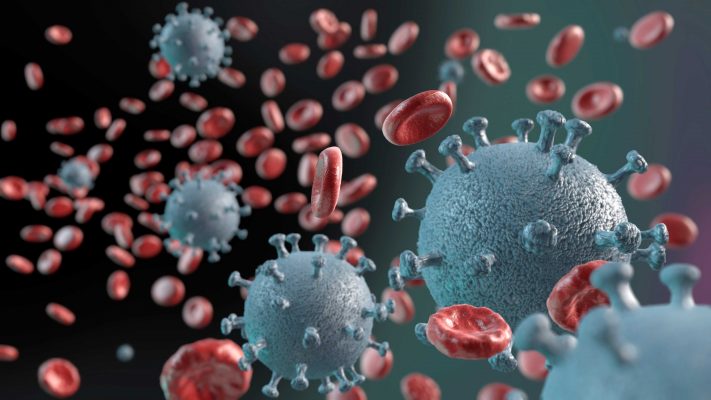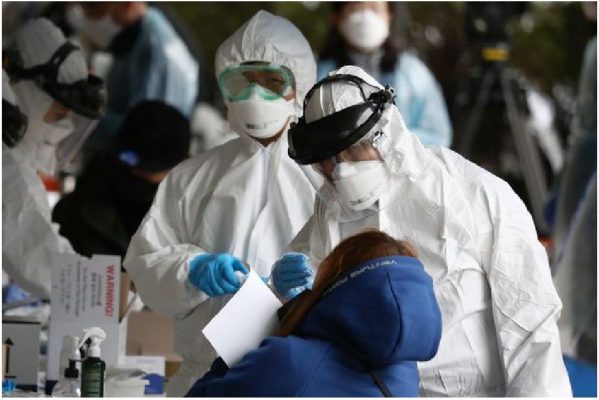
Introduction
South Korea shows great effort to control the novel Coronavirus COVID-19 with its strong determination and many experts suggest that South Korea’s approach to the COVID-19 outbreak can be used as a model to control this pandemic. Worldwide, the COVID-19 virus has infected more than 3,124,367 people with above 219,239 deaths as of April 29. To cope with the emergency, many countries have locked down entire cities and closed their borders. Life has come to a standstill during the COVID-19 pandemic in many countries, but it is on the right track and most of the economic activities are running at normal in South Korea.
Korean government’s core principles of openness, transparency, and democratic values can be seen in the “TRUST” campaign. Korean Government took all efforts and measures to combat COVID-19 that have covered so far in this article were initially characterised into “TRUST” campaign, which stood for Transparency, Robust screening and quarantine, a unique but universally-applicable solutions of strict control, and treatment. The “TRUST” campaign can be universal guiding principles for other countries that can be applied to fight against COVID-19.
The first confirmed case of the pandemic in South Korea was announced on January 20, 2020. In Korea, the number of confirmed cases increased dramatically with the sudden jump mostly attributed to “Patient 31” who participated in a gathering at a Shincheonji Church of Jesus the Temple of the Tabernacle of the Testimony church in Daegu. From the end of February till March there was rapid growth of COVID-19 and on March 31 it reached up to 9,887 cases. In comparison to the US (1,064,194 cases) and in European countries where the number goes in million till the end of April, Korea is limited to 10,761 cases at the end of April. These numbers show the success story of South Korea to control this pandemic.
What Korea did to overcome from COVID-19?
Some important measures have been taken by South Korea to control the COVID-19.
1. Intervene fast before it becomes crisis: Immediately after the first case in late January, government officials met representatives from several medical companies, and the government urged the companies to begin immediately developing COVID-19 test kits for mass production promising emergency approval. After the sudden outbreak of this pandemic, thousands of test kits were shipping daily and now South Korea was producing 100,000 kits per day. Korea is using theses kits for domestic purpose as well as it is exporting foreign countries. According to South Korea’s government, 47 countries so far have placed orders to import South Korean kits; another 39 have requested them as humanitarian aid.
South Koreans, unlike the US and European countries, primed to treat the COVID-19 as a national emergency. The quick government reacted to the first signs of the outbreak save many lives in South Korea. Korean government learned the importance of preparedness the hard way from the 2015 outbreak of the Middle East respiratory syndrome (MERS), which infected 186 and killed 36.
2. Early & Systematic Test: South Korea has performed tests on 619,881 people for the Coronavirus than any other country, enabling it to isolate and treat many people soon after they are infected. According to South Korea’s foreign minister Kang Kyung-wha: “Testing is central because that leads to early detection, it minimises further spread and it quickly treats those found with the virus”. He also added, “The key behind our very low fatality rate as well.” South Korea opened 600 testing centres designed to screen quickly as possible to many people and keep health workers safe by minimising contact with the infected people.
Korea also started the public messaging urging people to seek testing if they or someone they know develop symptoms. South Korea sending information though mobile phone messages about the COVID-19 infected people. The government requested to download a Smartphone app that guides them through self-checks for symptoms as well give information about infected people and availability of mask at medical shops in a particular area. The public and private offices, hotels, and other large buildings often use thermal image cameras to identify people with fevers, and also many restaurants check customers’ temperatures before accepting them.
3. Contact tracing and tight quarantine measures: If anybody found tests positive, health workers retrace the patient’s recent movements; this process of contact tracing allows health workers to identify networks of possible transmission. Korean authorities did tight quarantine measures which helped slow the spread of the virus. South Korea developed tools and practices for aggressive contact tracing during the MERS outbreak. Health officials can retrace patients’ movements using CCTV footage, GPS data from their vehicles, mobile phone, even credit card records.
The government set up dedicated facilities for patients at different stages of the disease to reduce the burden on hospitals. The government ordered its citizen into self-quarantine and must download the COVID-19 app which helps alerts officials if a patient ventures out of isolation. If some breaks restriction of self-quarantine he/ she can be fined around $2,500.

4. Enlist the public’s help: Korean government started the awareness programme and asking for public cooperation through television broadcasts, subway station announcements, and mobile phone alert messages. Korean authority has requested to wear face masks and maintain social distancing to the people. Public awareness programmes helped to reduce panic in society and instill confidence in the public mind to fight against COVID-19. Polls show that majority of Korean people approved the government’s efforts and had positive view towards President Moon’s government. Korean doctors, nurses, and officials from the health department also have praised the country’s nationalised health care system, which guarantees good care and helps fight against COVID-19.
5. Transparency: The South Korean government provides transparent and timely provision of information about COVID-19 to its citizen. The Korea Centre for Disease Control & Prevention (KCDC) is transparent and it provides daily updates with a 48 hour time about testing and new cases across the nations. The KCDC has moved with clarity and transparency to deal with new cases. It also provides information about the individual quarantine, schools/university schedule, and knowledge on effective treatments, which is documented. The transparent announcements about affected communities and areas being provided in daily press releases. Detailed information and transparency are provided by KCDC in a very unique way to handle the COVID-19 which results in support to the government.
Can Korean Model be used for India and the world?
South Korea stands out as an exemplar for its model to fight against COVID-19. Comparing Italy to South Korea shows a dramatic difference in result by applying mass testing, rigorous contact tracing, and mandatory quarantine for the patients tested positive.
However, experts argue that there are some major hurdles to follow the South Korea model to fight COVID-19. Worldwide there is a lack of political will and many countries can hesitate to impose strict measures. Another challenge is public will and support to the government. In Korea, social trust is higher in comparison to many other countries.
The US and European society are beset by polarisation and populist backlash. Because of public and government debate over whether mass testing matters or particularly for those who are only having minor symptoms in the countries of the United States and Europe resulted into a large numbers of deaths due to COVID-19.
COVID-19 catastrophic outbreak originated from China and now it’s been spreading across the world. South Korea’s model could help counties in the US, Europe, and others to fight against this pandemic.
Many countries are looking to Korea’s model to contain the spread of the COVID-19. French leader stated: “That France would like to learn Korean approach to fight the Coronavirus”. US President Donald Trump said, “In South Korea, they did have a large number of tests available over the last several weeks which resulted into a tremendous success.
India also has appreciated the Korea Model and Delhi Chief Minister Arvind Kejriwal applauded Korea to fight against COVID-19 and it adopted the South Korea model which is to identify every possible COVID-19 suspect, test them and treat them. Delhi government presented a five-point action plan includes five Ts- testing, tracing, treatment, team-work, and tracking and monitoring to fight COVID-19 which is similar to Korea Model. He pointed that South Korea identified every single patient through mass tests and its model is successful and containment tools are not prohibitively complex or expensive.
The COVID-19 has presented major challenges to the World Health Organisation (WHO) and worldwide healthcare system, economy as well as public welfare. Korea’s approach to tackle this pandemic should learn by other nations. The world can learn from what South Korea is doing right and should adopt the Korea Model of COVID-19.
The Writer is Lecturer at Department of Political Science and International Relations, Kookmin University, South Korea








